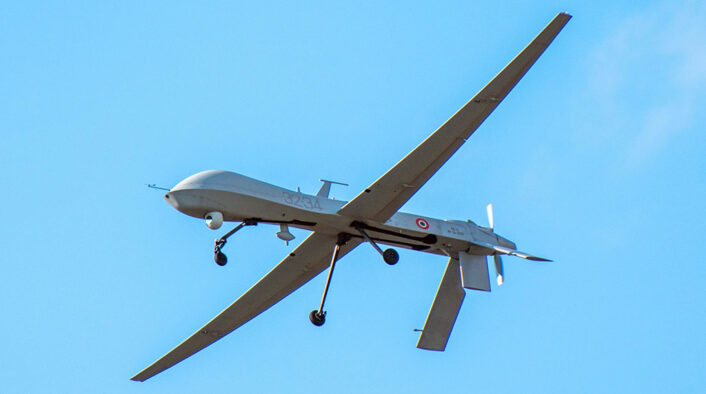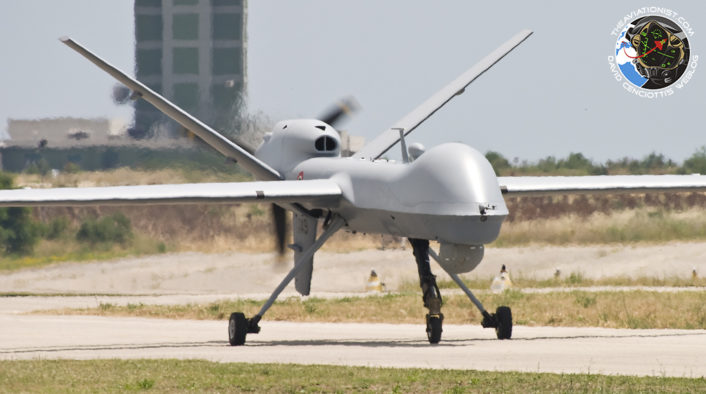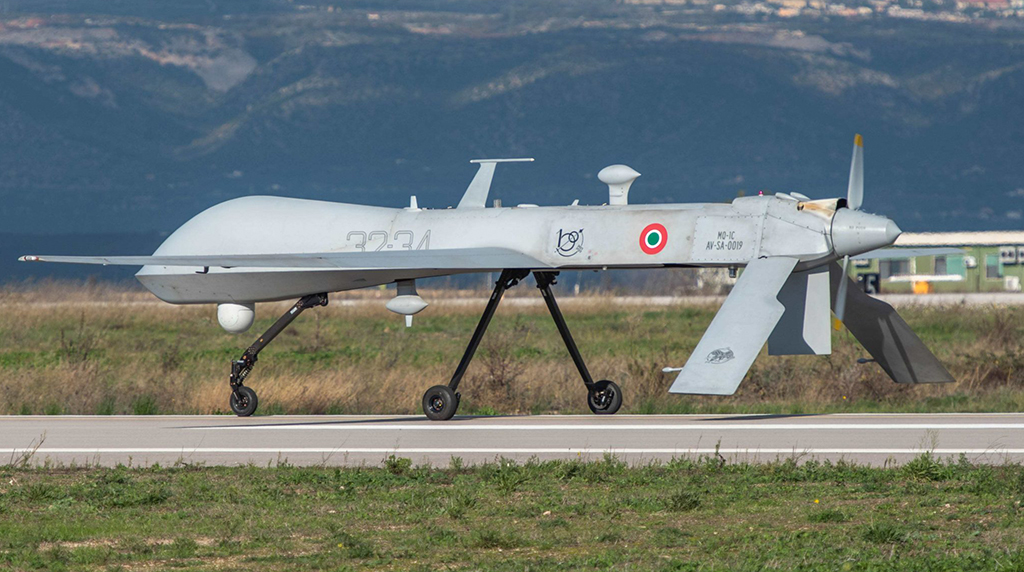The MQ-1C Predator A+ Remotely Piloted Aircraft System (RPAS) has been retired after 18 years and +30,000 flight hours.
On Dec. 19, 2022, with a transfer flight from the 61° Gruppo (Squadron) APR (Aeromobili a Pilotaggio Remoto – Remotely Piloted Aircraft) at Sigonella, to the 32° Stormo (Wing) at Amendola, the operational career of the MQ-1C Predator A+ in the Aeronautica Militare (Italian Air Force) has come to an end. Noteworthy, the Italian designation for what was just an upgraded variant of the baseline RQ-1B Predator A was the same used by the manufacturer General Atomics Aeronautical Systems for the more advanced MQ-1C Gray Eagle.
The first Italian Air Force Predator unmanned aircraft were delivered in December 2004 and carried out the first operational missions in January 2005. Since then, the RPAS has completed over 3800 sorties, logging more than 31,000 flight hours, 20K of those were carried out by the 28° Gruppo out of Amendola, and the rest by the 61° Gruppo out of Sigonella.

Interestingly, 70% of the Predator A+ flight hours were carried out in operational missions and only 30% in training: some unique statistics among all the aircraft in service with the Aeronautica Militare. Capable of ISR (Intelligence Surveillance and Reconnaissance) tasks as well as Target Acquisition in support of CAS (Close Air Support) and CSAR (Combat Search And Rescue) missions, the Italian Predators have been involved in numerous military and coalition missions abroad (including Iraq, Afghanistan, Kosovo, Libya, the Horn of Africa and Kuwait), where they have contributed to the security of troops on the ground through a precious monitoring and surveillance activities from above, in particular for the unarmed escort of convoys in a hostile environment, for the discovery of improvised devices and for the monitoring of operational targets.
At home, the Predators have contributed to the public order, search and rescue and environmental monitoring operations, flying in support of the Civil Protection Department as well as other civilian agencies.
“In modern operational theaters, Information Superiority represents an element of essential strategic importance, without which every effort and even the most modern system would be useless”, said Col. Roberto Massarotto, Commander of the 32nd Wing, during a phase out ceremony at Amendola. “To fulfill the new missions that were taking shape, beginning in 2004, the Air Force equipped itself with the MQ-1 system, an aircraft that is not fast, but whose persistence, discretion, silence, collection and dissemination of data capacity, along with the potential for dual use are unrivalled by other systems. However, the successes obtained by this platform would never have been achieved without the precious work of the men and women of the 61st and 28th Gruppo. A valuable and tiring job, which is carried out away from the spotlight, in silence, where no one can see or hear you and perhaps without being able to share, with those close to you, the satisfaction of a particularly important success”.
Until the MQ-1C was retired, the 32° Stormo and its two child units, the 28° Gruppo based at Amendola, and the 61° Gruppo, detached to Sigonella, in Sicily, operated a mixed fleet of MQ-1C Predator A+ and MQ-9A Predator B RPVs (Remotely Piloted Vehicles). With the retirement of the MQ-1C, the ISTAR activity of the 32° Stormo is carried out by the more capable MQ-9A Predator B. The Italian Air Force has acquired six of these between 2008 and 2009. One was lost over Libya in 2019.

The 32° Stormo is a pretty unique Wing within the Italian Air Force as it operates four different types of aircraft (five until the Predator A+ was phased out): the F-35A and F-35B Lightning II, the MB.339, and Predator B. Moreover, out of the three Gruppi depending from the 32nd Wing Commander, only the 13° and 28° are based in Amendola since the 61° Gruppo, as explained, is forward based to Sigonella, Sicily.













